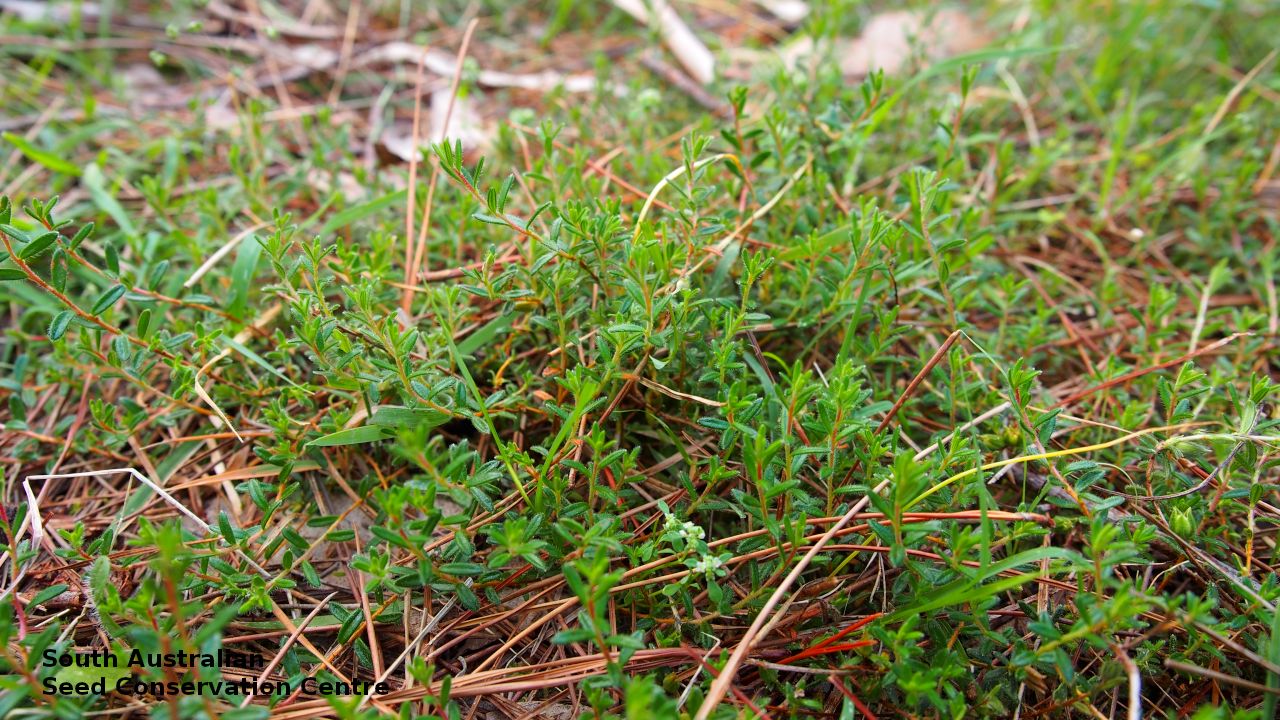
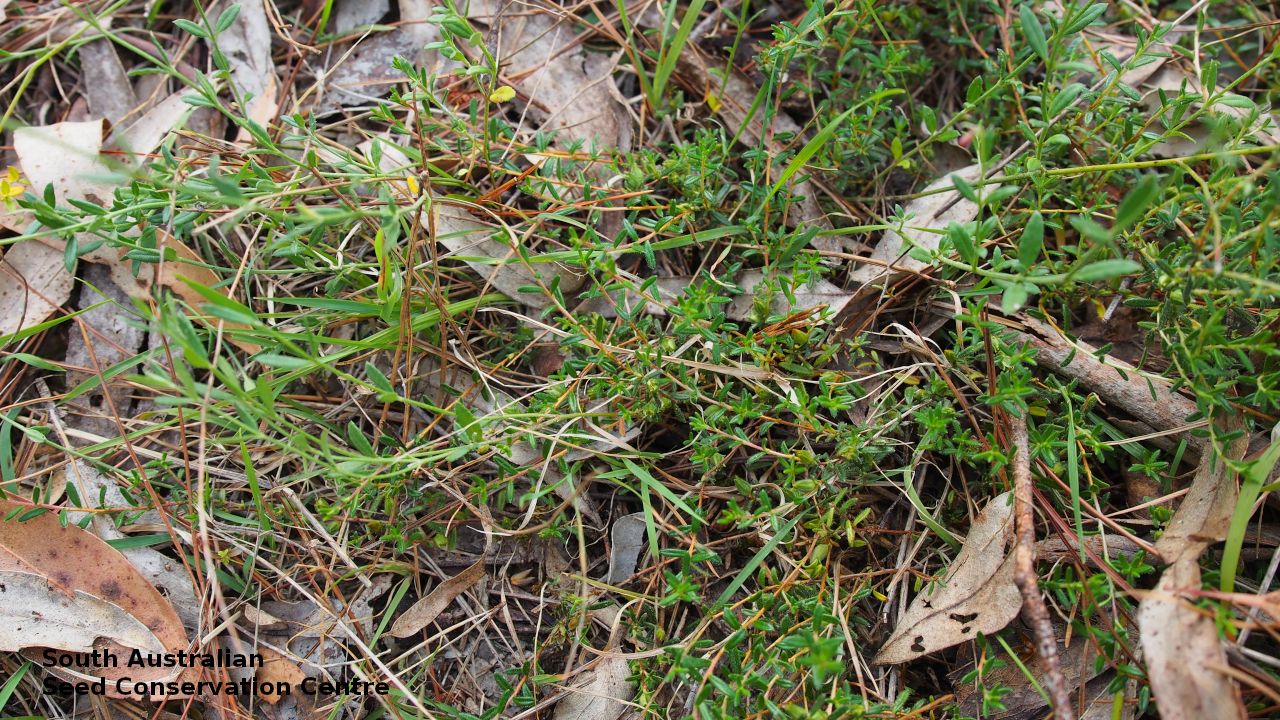
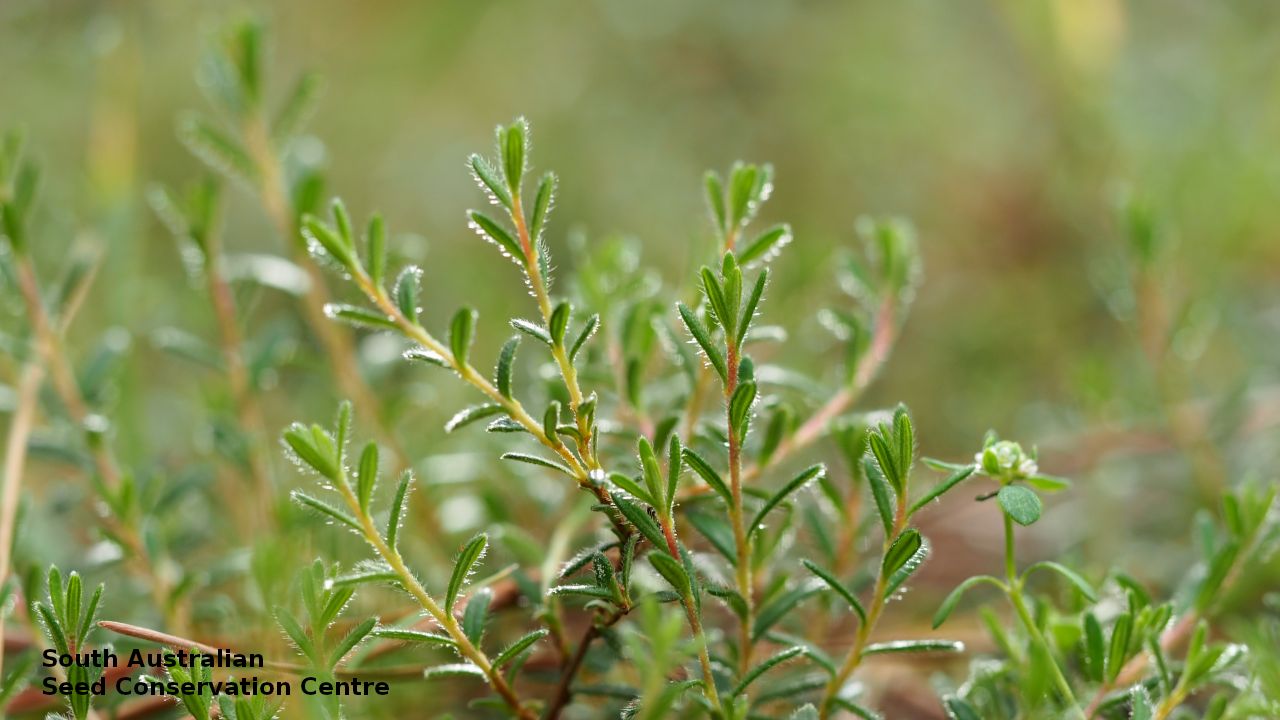
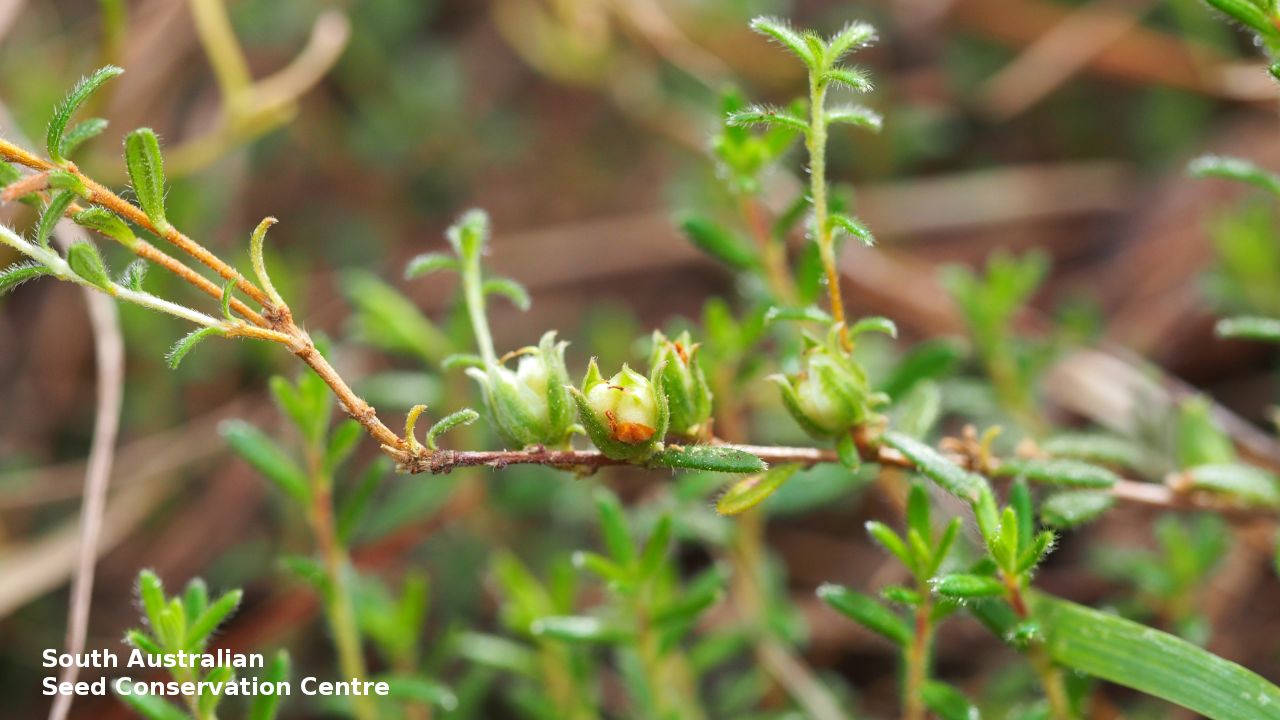
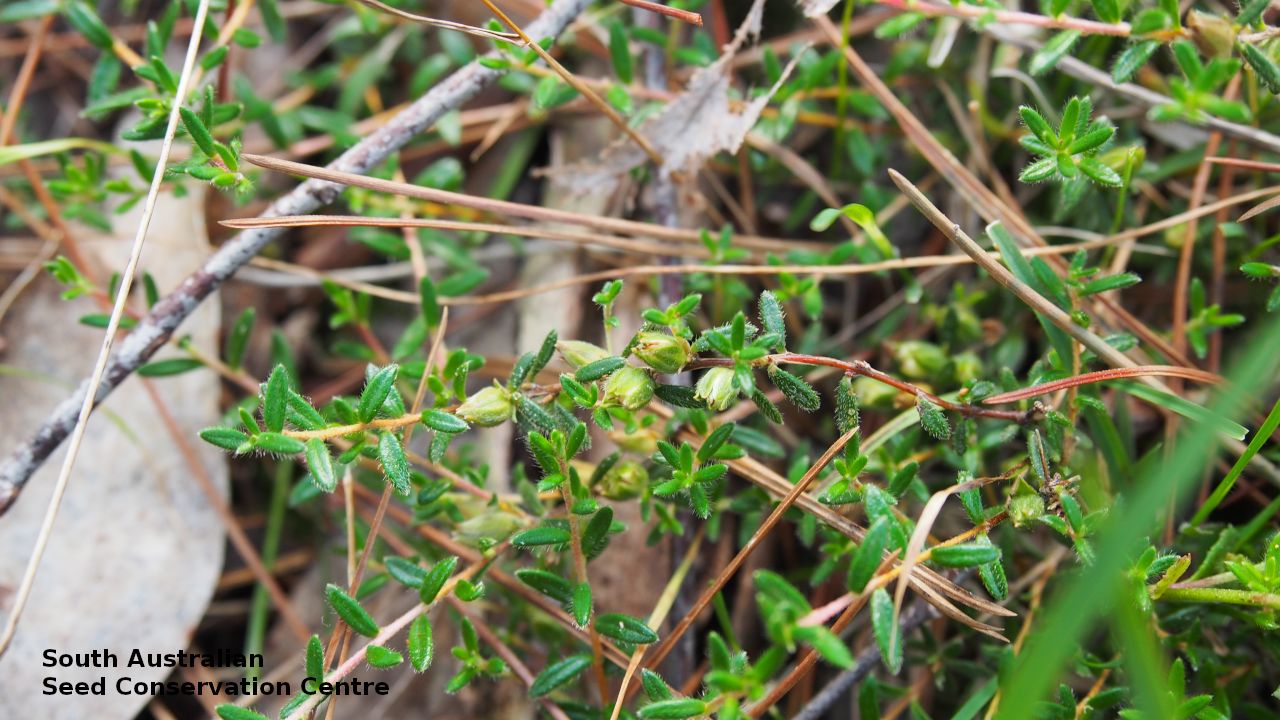
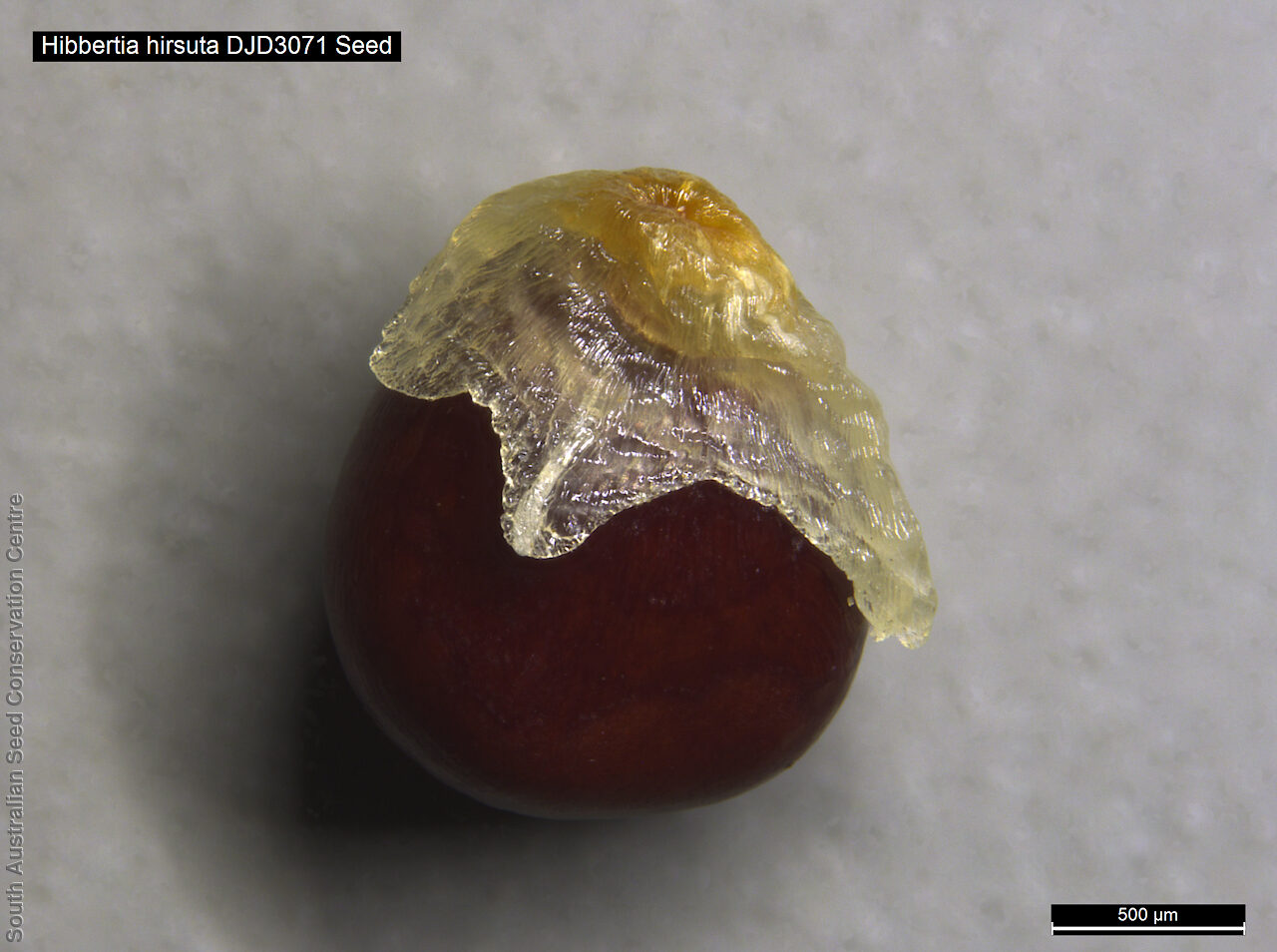

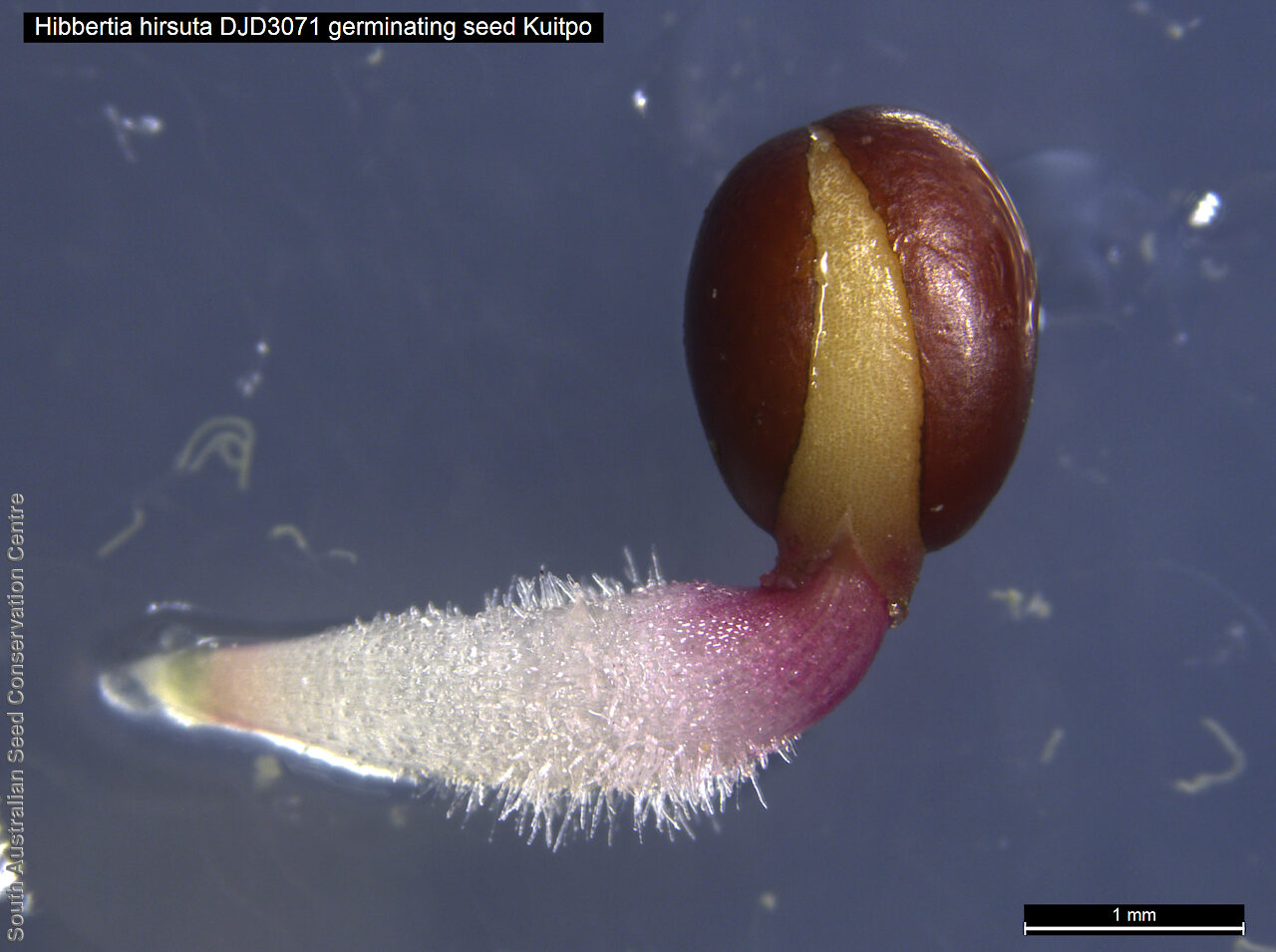



Prior names
Pleurandra hirsuta
Common names
Hairy Guinea-flower
Etymology
Hibbertia named after George Hibbert (1757-1837), a London merchant who maintained a private botanic garden at Chelsea. Hirsuta from the Latin 'hirsutus' meaning hairy, referring to the species being covered in rough, short stiff hairs.
Distribution and status
Found along Meadows Creek in South Australia, growing on clay soils on flats near creek line. Also found in Tasmania. Native. Very rare in South Australia. Uncommon in Tasmania.
Herbarium region: Southern Lofty
AVH map: SA distribution map (external link)
Plant description
Prostrate to scrambling shrub to 15 cm tall; moderately branched, branches thin �wiry, with leaf bases scarcely raised and scarcely decurrent; pilose but soon glabrescent, covered on many parts with persistent hairs. Leaves narrowly elliptic to rarely linear, to 6.4 mm long and 1.6 mm wide; gradually tapering into petiole; acute, rarely obtuse; above grooved to incurved and pilose; below exposing a tomentose undersurface between the slightly revolute margins and a narrow central vein which is often visible to the leaf apex. Flowers small with one or two inconspicuous narrow yellow petals and stamens. Flowering between September and October. The vegetative part of this species is very similar to other small species of Hibbertia, however, it is easily distinguishable by having only one or two petals and stamens. Fruits are brown ovoid capsule with two seeds. Seeds are brown, globular seed to 1.5 mm diameter.
Seed collection and propagation
Collect seeds between November and December. Collect mature capsules that are turning a pale straw-colour and contain brown seeds. Place the capsules in a tray and leave to dry for one to two weeks. Then rub the capsules gently by hand to dislodge the seeds. Use a sieve to separate the unwanted material. Store the seeds with a desiccant such as dried silica beads or dry rice, in an air tight container in a cool and dry place. From one collection, the seed viability was high, at 100%. This species has morpho-physiological dormancy and can be difficult to germinate.
| Location | No. of seeds (weight grams) | Number of plants | Date collected | Collection number Collection location | Date stored | % Viability | Storage temperature |
|---|---|---|---|---|---|---|---|
| BGA MSB | 1,700 (2.44 g) 1,700 (2.44 g) | 30+ | 27-Nov-2014 | DJD3071 Southern Lofty | 1-Jan-2016 | 100% | -18°C |
| BGA | 1,550 (2.435 g) | 12 | 24-Nov-2021 | JJS23 Southern Lofty | 7-Jul-2022 | 100% | -18°C |
Number of plants: This is the number of plants from which the seeds were collected.
Collection location: The Herbarium of South Australia's region name.
% Viability: Percentage of filled healthy seeds determined by a cut test or x-ray.